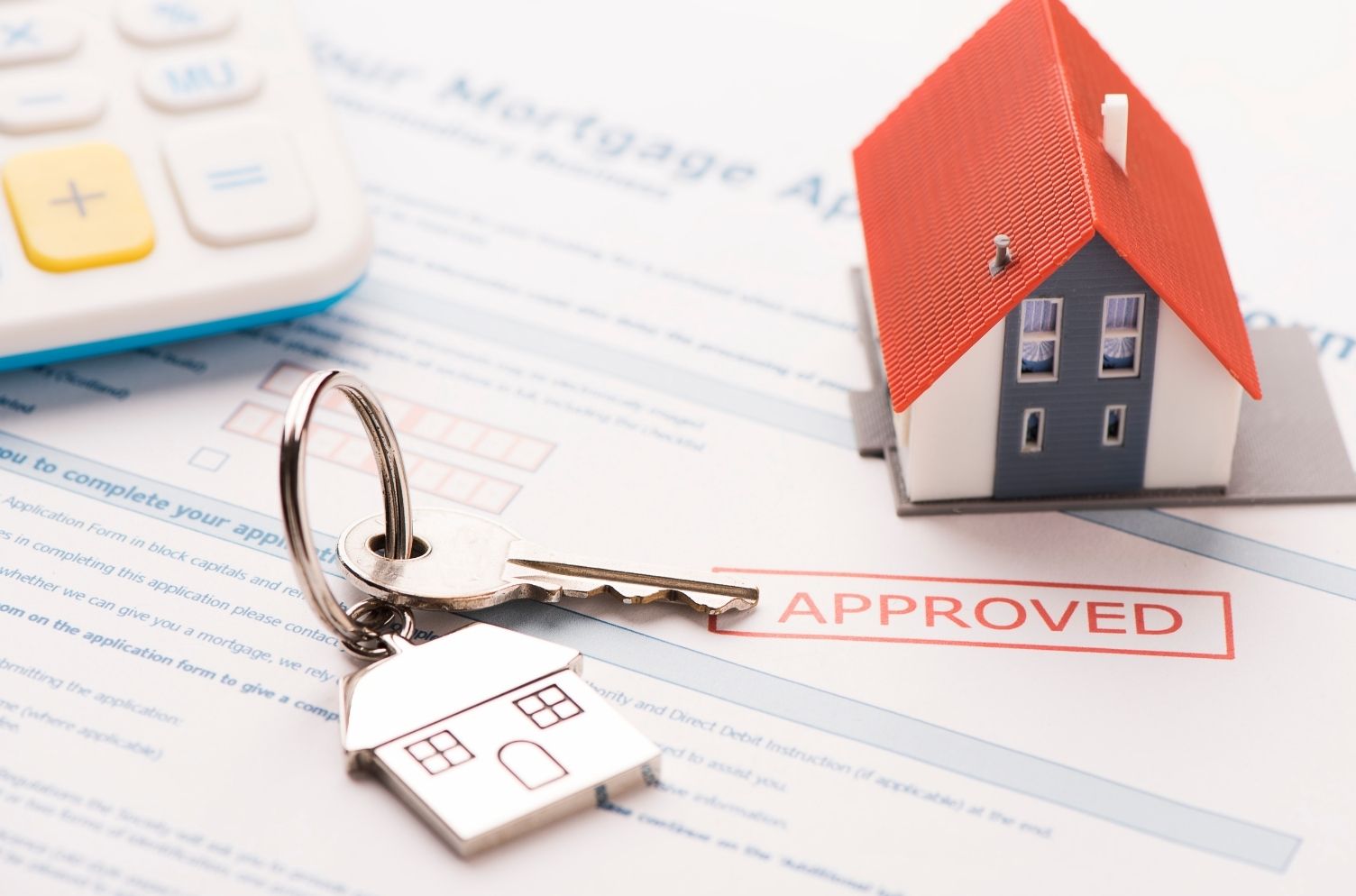How To Calculate Non-Residential Stamp Duty Mortgage?

Calculating non-residential stamp duty can be confusing. Stamp Duty Land Tax (SDLT) kicks in for properties over $150,000. Our article breaks down the calculation process, making it easier for you.
Keep reading to simplify your mortgage journey.
What is Non-Residential Stamp Duty?
Non-Residential Stamp Duty is a tax people pay when they buy properties used for business purposes. This differs from the stamp duty on homes, emphasizing its unique application.
Definition and Key Purposes
Stamp Duty Land Tax (SDLT) is a tax applied on the purchase of non-residential or mixed-use land and properties in transactions valued at £150,000 or above. This levy serves as a critical revenue stream for local governments, funding public services such as education, healthcare, and infrastructure development.
Buyers must file an SDLT return for most property acquisitions under £150,000 to comply with tax regulations.
Contrast with Residential Stamp Duty
Commercial stamp duty rates differ significantly from those applied to residential properties. While homeowners pay residential SDLT on houses and flats, buyers of non-residential properties enjoy lower tax rates.
This distinction encourages investment in commercial spaces such as shops, offices, and agricultural lands that don't serve as part of a dwelling's garden or grounds. By applying different scales and thresholds for non-residential transactions, the government aims to balance the real estate market’s dynamics.
Using a non residential stamp duty calculator simplifies understanding these differences by providing instant calculations based on the purchase price. Lower rates for non-residential transactions reflect the distinct nature of investing in commercial versus residential assets.
Moving next into how these rates are calculated offers insight into planning financial commitments effectively.
How to Calculate Non-Residential Stamp Duty
Calculating non-residential stamp duty starts with understanding the specific rates and thresholds that apply. Look for examples of typical non-residential properties to see how these rules might affect your costs.
Rates and Threshold Guidelines
Understanding how to calculate stamp duty or non-residential stamp duty requires familiarity with the rates and threshold guidelines. These are pivotal in determining the total Stamp Duty Land Tax (SDLT) due on your property transaction. Follow this straightforward guidance to grasp the essentials.
For a clear example, purchasing a freehold commercial property stamp duty for £275,000 would result in a total SDLT of £3,250. This total amount to pay commercial stamp duty comes from applying 0% on the initial £150,000, 2% on the next £100,000, and 5% on the remaining £25,000.
Transition smoothly to the next section by considering how to integrate SDLT payments into your overall financing strategy.
Typical Non-Residential Property Examples
Moving from the understanding of rates and thresholds, we delve into what constitutes non-residential properties. Commercial buildings stand out as primary examples. These structures serve business or commercial activities rather than residential living.
Offices, retail spaces, and warehouses fall under this category. Each plays a significant role in determining how much stamp duty can be acquired in the calculation process.
Properties that are not designed for living – such as forests and agricultural land – also fit into the non-residential bracket. Understanding these property types is crucial for accurate stamp duty calculations.
Utilizing a Stamp Duty Calculator
A Stamp Duty Calculator simplifies the process of figuring out how much you need to pay land transaction tax and tax for non-residential properties. By entering details about the property price and location into the calculator, it quickly gives you an estimate of your stamp duty cost.
Knight Frank provides a handy tool specifically designed for calculating stamp duty on non-residential property in England and Wales. This makes it easier for buyers to understand their financial obligations without getting lost in complex tax rate tables.
This approach not only saves time but also eliminates the guesswork from planning your budget. After using a commercial stamp duty calculator, you can move forward with clear information on how much money to set aside for this particular expense, leading smoothly into understanding payment methods and timing in the following section of our discussion.
Steps for Paying Non-Residential Stamp Duty
Paying non-residential stamp duty requires knowing the right time and choosing a payment method. Learn how to include stamp duty in your mortgage and find out about possible exemptions.
Timing and Payment Methods
You must pay stamp duty on commercial property within 30 days from the completion date. This deadline is crucial to avoid any late fees or penalties. Various payment methods are available, including online transfers, checks, or directly through your solicitor, who can often handle this process for you efficiently.
Choosing the right payment method ensures a smooth transaction and adherence to deadlines. Your solicitor usually provides guidance on the most suitable option based on your situation.
Direct bank transfers tend to be fast and reliable, allowing for timely compliance with the 30-day rule.
Incorporating Stamp Duty into a Mortgage
Many people find that adding the stamp duty cost to their mortgage can ease immediate financial pressure. This approach spreads the tax payment over the term of the mortgage, making it more manageable monthly.
This option allows investors to preserve cash for other expenses or investment opportunities, providing flexibility in managing their finances.
Non-Residential Stamp Duty Rates by Region
Discover how non-residential stamp duty rates vary across England, Northern Ireland, Scotland, and Wales to plan your next property investment wisely.
England and Northern Ireland Guidelines
In England and Northern Ireland, the rates for non-residential stamp duty start at 0% for properties worth up to £150,000. This means you pay no stamp duty on commercial properties valued under this threshold.
For properties priced between £150,001 and £250,000, a 1% rate applies. Once the property value hits over £250,001, the rate increases to 5%. And for those purchasing extremely high-value commercial spaces exceeding £1 million, the rate further climbs to 6%.
These progressive rates aim to adjust the tax burden according to the property's price.
Calculating your payable amount involves considering these specific thresholds and percentages. If you're buying a shop or office space valued at £200,000 in England or Northern Ireland, your stamp duty would be calculated based on the 1% rate applied above £150,000 but not exceeding £250k.
It’s crucial for buyers and investors of non-residential properties in these regions to understand this tiered system to accurately budget for their purchase costs.
Stamp Duty in Scotland
Moving from the guidelines in England and Northern Ireland, Scotland approaches stamp duty with its unique system known as Land and Buildings Transaction Tax (LBTT) for non-residential properties.
This tax applies to those buying or having an existing leasehold property in Scotland, featuring different thresholds from what you might find elsewhere in the UK.
The LBTT rates for non-residential properties vary based on the purchase price or lease premium value. For buyers and tenants looking into Scottish real estate, understanding these specific rates is crucial to accurately budgeting for any property transaction costs.
Unlike the standard stamp duty, LBTT emphasizes a progressive structure where higher values are taxed at higher rates, ensuring that the taxation reflects the property's market value accurately.
Welsh Stamp Duty Rates
In Wales, the non-residential stamp duty is known as Land Transaction Tax (LTT). This tax applies to both buying and leasing property and has different thresholds than those in England and Northern Ireland.
For example, properties or land bought for more than £150,000 are subject to LTT at varying rates depending on the price bracket. As prices increase, so do the percentage rates applied for tax calculation.
This makes understanding specific Welsh rates crucial for anyone involved in a non-residential transaction within Wales.
The structure of LTT is designed to ensure fairness, applying higher taxes to more expensive purchases. By adjusting these thresholds and rates periodically, Wales aims to adapt its tax policies to real estate market changes.
Next up are steps detailed on how one goes about paying this Land Transaction Tax after determining how much is due.
Conclusion
Calculating non-residential stamp duty for mortgages requires attention to detail and an understanding of current rates. Property buyers need to know the value of their purchase and the stamp duty rate applicable.
Using a calculator specifically for non-residential properties simplifies this process greatly. For accurate figures, consulting with a tax expert or legal representative ensures you cover all bases before completing your property transaction.
Stay informed on regional differences to manage your budget effectively.
FAQs
1. What is non-residential stamp duty?
Non-residential stamp duty is a tax paid on properties that are not used as homes, like offices or shops.
2. How do I calculate the stamp duty for a non-residential property?
To calculate the stamp duty, you need to apply the specific tax rate to the purchase price of the property.
3. Are there different rates for calculating non-residential stamp duty?
Yes, there are different rates depending on the price of the property and its use.
4. Can I calculate non-residential stamp duty online?
Yes, many websites offer calculators where you can easily compute your non-residential stamp duty.
5. Do I have to pay non-residential stamp duty immediately after buying a property?
You usually have a set period after purchasing the property during which you must pay the non-residential stamp duty.
Related Posts
Ask the Expert
Mortgage Brokers




